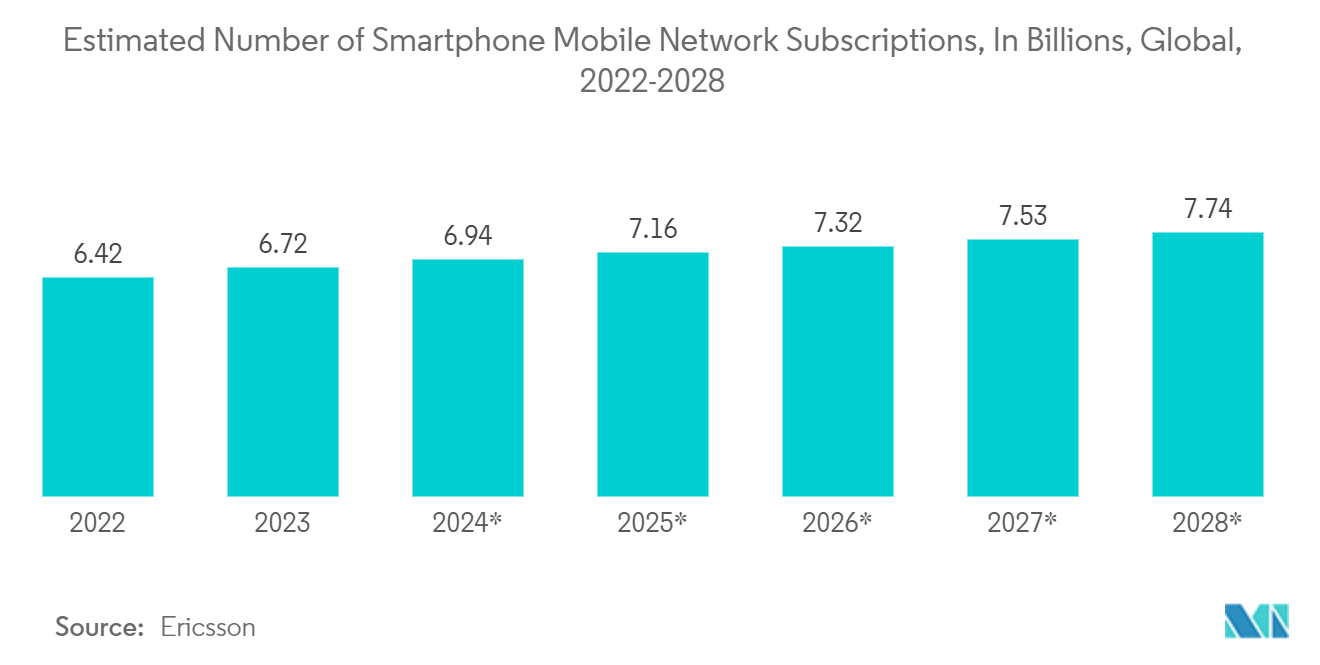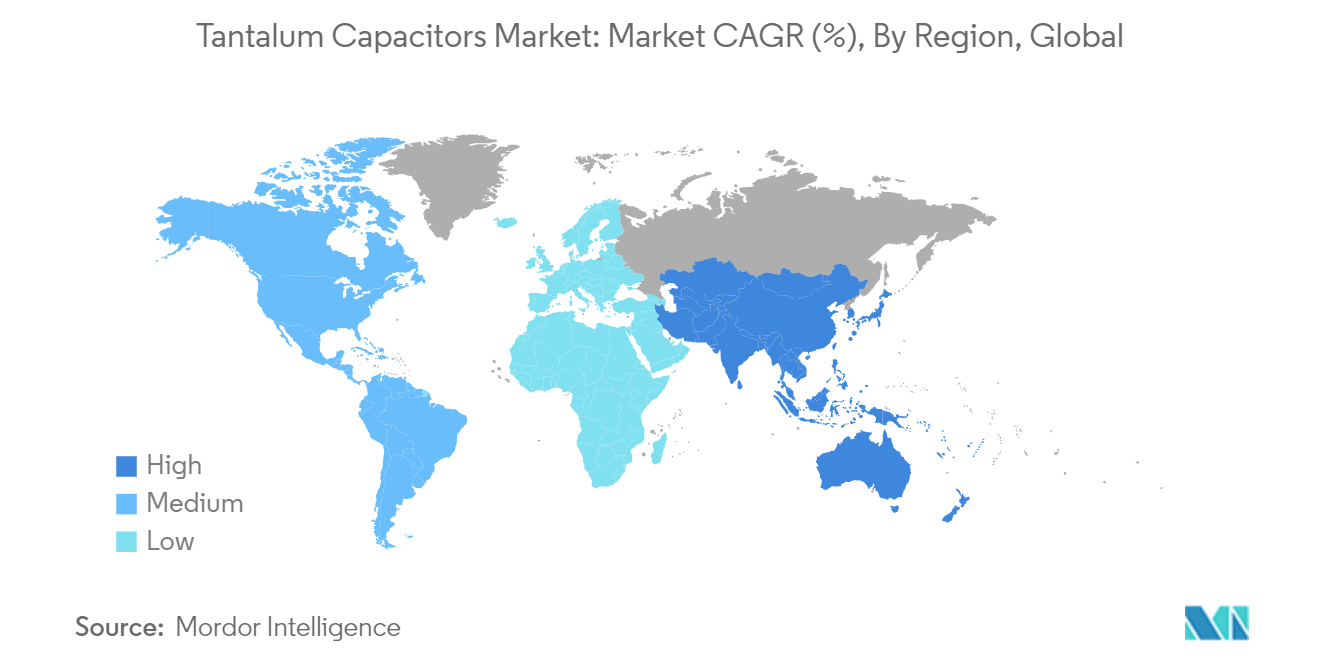Market Trends of Tantalum Capacitors Industry
Consumer Electronics Segment to Witness Major Growth
- Tantalum capacitors are commonly used in various consumer electronic devices, including smartphones. These capacitors are often used as the capacitors connected to the power line of the Power Amplifier (PA) for GSM on smartphones. Tantalum capacitors are small in size, making them suitable for use in small-footprint applications like smartphones.
- According to Ericsson, the global number of smartphone subscriptions reached over 6.6 billion in 2022. It is expected to hit 7.8 billion by 2028. The countries with the most smartphone mobile network subscriptions are the United States, China, and India. Such a huge rise in smartphones would drive the market.
- Tantalum capacitors are also used in laptops and other electronic devices. For example, researchers demonstrated that about 1 gram of tantalum is used per unit in laptops, specifically in motherboard power supply filters. This is because tantalum capacitors offer higher capacitance values than MLCC capacitors and display no microphonic effect, making them an attractive option for devices with flat or compact designs.
- With smartphones supporting 5G becoming more widespread and devices like wearable devices becoming increasingly multifunctional and compact, the need for smaller, higher-density electronic circuitry is increasing. Moreover, as 5G is rapidly growing, the need for a tantalum capacitor increases. Replacing solid capacitors with wet tantalum capacitors will likely present an opportunity soon.
- According to recent data released by GSMA Intelligence, 5G connections will account for more than half (51%) of all mobile connections by 2029. This percentage is expected to increase further to 56% by the end of the decade, solidifying 5G as the leading technology for connectivity. This number is anticipated to reach 1.6 billion connections by the end of 2023 and 5.5 billion by 2030. The tantalum capacitors support the effective functioning of network equipment, enhancing the speed of data transmission and strengthening connectivity, ultimately propelling the growth of the tantalum capacitors market.

Asia-Pacific to Witness Significant Growth
- As the Asia-Pacific region embraces the transition towards cleaner energy sources and strives to reduce carbon emissions, the demand for electric vehicles has increased. Consequently, there is an increased need for tantalum capacitors to power these vehicles. In electric vehicle batteries, tantalum capacitors are crucial in improving energy efficiency, extending battery life, and enhancing overall performance.
- Additionally, consumer electronics such as smartphones and other mobile devices drive further demand for tantalum capacitors in Asia-Pacific. As consumers demand smaller, lighter, and more powerful devices, manufacturers turn to tantalum capacitors to meet these requirements.
- The deployment of 5G technology in the Asia-Pacific region has fueled the demand for tantalum capacitors in telecommunication infrastructure. Tantalum capacitors play a vital role in 5G base stations, antennas, and other telecommunications equipment by facilitating efficient power management, filtering, and signal conditioning.
- With the ongoing construction of the next generation of telecom networks, there is poised to be a surge in the utilization of tantalum capacitors in this application, spanning both the main circuit boards and the GaN RF power amplifier.


